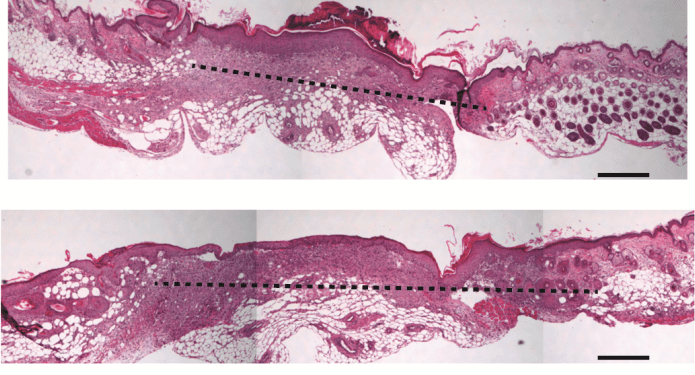
The figure shows the microscopic analysis (a) of an excisional wound trial in diabetic mice. Wounds were treated with intradermal injections of FnAb-pSi NPs, FnAb alone, mIgG-pSi NPs, or unloaded pSi NPs at the time of injury and wound gape measured with time (b). Scale bar of (a) is 100 μm.
Flightless I (Flii) is a multifunctional protein that regulates cellular mobility, contraction, adhesion, proliferation, and cytokine production. Its presence is elevated in human chronic wounds and it has a negative effect on wound repair. Decreasing its activity improves healing responses.
Flii neutralizing antibodies (FnAbs) decrease Flii activity in vivo and hold significant promise as healing agents. However, to avoid the need for repeated application in a clinical setting and to protect the therapeutic antibody from the hostile environment of the wound, suitable delivery vehicles are required.
Allison Cowin, Nicolas Voelcker and colleagues from the University of South Australia reveal in their recent article in Advanced Healthcare Materials how they use non-toxic porous silicon nanoparticles (pSi NPs) for the controlled release of FnAb to diabetic wounds.
They loaded the pSi NPs with FnAb and applied them to the wound margin. It is envisaged that pSi NPs could be incorporated into wound dressing materials in order to deliver FnAb into wound fluid, in order to improve chronic wound healing.

















